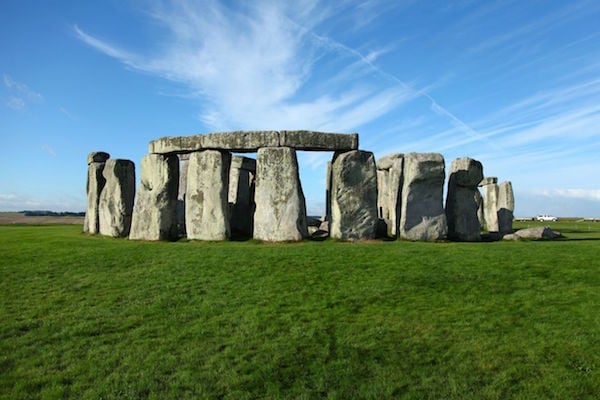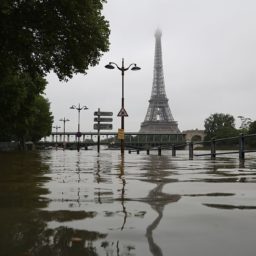


Stonehenge. Courtesy Oxford Scientific Films.
We may never fully unlock the mysteries of Stonehenge, that monumental circle of stone monoliths erected by the ancients in Wiltshire, United Kingdom, but a new report from the United Nations offers a surprising prediction on what could bring the historic site down: Moles.
That’s right. Small, burrowing mammals could potentially lead to Stonehenge’s collapse, should the number of mole and their ilk continue to rise along with temperatures affected by climate change. The Daily Mail reports that the Union of Concerned Scientists (UCS), the United Nations Educational, Scientific and Cultural Organization (UNESCO), and the United Nations Environment Programme (UNEP) have issued a joint report noting that “warmer winters are likely to bring higher populations of burrowing mammals including badgers, moles and rabbits, which may destabilise stonework and disturb buried archaeological deposits.”
Stonehenge’s slabs weigh up to 40 tons each, so there will obviously need to be a lot of moles before the World Heritage Site is affected. It is far from the only historic site at risk, however. The report identifies erosion and rising water levels as major, climate change-related threats to historically- and culturally-significant places around the world.

Skara Brae. Courtesy Webber, via Wikimedia Commons.
Most at risk, according to the UN, is Skara Brae, a 5,000-year-old Stone Age settlement at Scotland’s Heart of Neolithic Orkney. UNESCO considers it the best-preserved Neolithic site in the world, but it is severely-threatened by coastal erosion.
“If sea level rise and storms get worse because of global warming then we are going to be losing huge amounts of British heritage directly into the sea,” said Adam Markham, deputy director of the UCS’s climate and energy program and the report’s lead author, in a statement.
Other World Heritage sites mentioned in the report include the Statue of Liberty in New York, which, along with Ellis Island, was severely damaged during Hurricane Sandy, and the city of Venice, which has well-known environmental problems. Earlier this year, between cruise ship traffic and climate change, Venice was identified as the most endangered European heritage site by citizen movement Europa Nostra.

Aerial view of Venice. Courtesy Oliver-Bonjoch via Wikimedia Commons.
“Globally, we need to better understand, monitor and address climate change threats to World Heritage sites,” added Mechtild Rossler, director of UNESCO’s World Heritage Centre. “Limiting global temperature rise to a level well below two degrees Celsius is vitally important to protecting our world heritage for current and future generations.”
Meanwhile, despite Stonehenge’s uncertain future, the world still hopes to understand its murky origins. Earlier this week, according to the Daily Mail, volunteers attempted to recreate Neolithic construction methods, demonstrating how massive stones might be transported by dragging them using ropes and logs.
The most recent Stonehenge hypothesis argues that the stone circle was an ancient burial ground, although less-convincing theories still persist.







